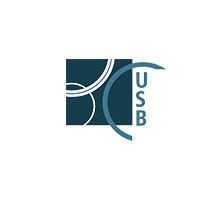Saake, Pia  ORCID: 0000-0002-1776-8580
(2025).
Activation and modulation of lipid- and polysaccharide-induced plant immunity during beneficial plant-microbe interactions.
PhD thesis, Universität zu Köln.
ORCID: 0000-0002-1776-8580
(2025).
Activation and modulation of lipid- and polysaccharide-induced plant immunity during beneficial plant-microbe interactions.
PhD thesis, Universität zu Köln.

|
PDF
PhDthesis_PiaSaake_for_print_nosign.pdf Download (35MB) |
Abstract
Plants are surrounded by a variety of microorganisms with commensal, mutualistic and pathogenic lifestyle. To monitor their environment, plants employ a multi-layered immune system consisting of extra- and intracellular receptors. Membrane-bound pattern recognition receptors (PRRs) detect conserved microbe-associated molecular patterns (MAMPs) outside of plant cells and activate pattern triggered immunity (PTI). Nucleotide-binding leucine-rich repeat receptors (NLRs) detect microbial effectors in the plant cytosol and activate effector triggered immunity (ETI). In the last decades, proteins, carbohydrates, nucelotides and lipids have been identified as MAMPs. Long-chain carbohydrates, or polysaccharides, are key structural components of microbial extracellular polysaccharide (EPS) matrices and cell walls (CWs), forming the outermost layers of microbial cells. Along with plasma membranes, which are predominantly composed of lipids, these structures constitute the interface for plant-microbe interactions. Consequently, EPS- and CW-derived polysaccharides and membrane lipids play a pivotal role in the establishment of plant-microbe associations. Here, we characterize their role as MAMPs and modulators of immunity in the interaction of the the model plant A. thaliana and crop barley (Hordeum vulgare) with the beneficial microbes Flavobacterium sp. Root935 and Serendipita indica, respectively. We provide evidence that EPS-matrices from both bacteria and fungi might function as oxidative shields or calcium chelators in addition to their function as MAMPs, thereby modulating the host immune response (Chapter 2.1, 2.2). This is likely attributed to the high branching or decoration frequency of the EPS. In addition, we identify β-glucan binding proteins as important compatibility factors in beneficial plant-microbe interactions (Chapter 2.3). Moreover, we provide a comprehensive overview of the PTI response, activated upon perception of lipids, isolated from S. indica mycelium, in barley roots. We identify ergosterol as the main immunogenic component of S. indica mycelium lipids and demonstrate activation of plant lipid signaling pathways, in particular phosphatidylinositol phosphate (PIP) signaling and diterpene biosynthesis, in response to fungal lipid treatment. This indicates that plant lipids mediate immune responses to fungal lipids in barley (Chapter 3.1). Finally local and systemic host responses to fungal lipids during S. indica colonization are further characterized (Chapter 3.2) and compared to colonization by the pathogenic fungus Bipolaris sorokiniana (Chapter 3.3). Altogether, the work depicted in this thesis expands our knowledge on the role of lipids and polysaccharides in plant immunity during beneficial plant-microbe interactions, which could be used to develop novel strategies to promote accommodation of beneficial microbes and enhance crop resistance.
| Item Type: | Thesis (PhD thesis) |
| Translated abstract: | Abstract Language Pflanzen sind von einer Vielzahl von Mikroorganismen mit kommensalistischer, mutualistischer und pathogener Lebensweise umgeben. Um ihre Umwelt zu überwachen, verfügen Pflanzen über ein vielschichtiges Immunsystem, das aus extra- und intrazellulären Rezeptoren besteht. Membrangebundene PRR (pattern recognition receptors) Rezeptoren erkennen konservierte MAMPs (microbe-associated molecular patterns) außerhalb von Pflanzenzellen und aktivieren PTI (pattern triggered immunity). NLR nucleotide-binding leucine-rich repeat receptors) Rezeptoren erkennen mikrobielle Effektoren im pflanzlichen Zytosol und aktivieren ETI (effector triggered immunity). In den letzten Jahrzehnten wurden Proteine, Polysaccharide, Nukleotide und Lipide als MAMPs identifiziert. Langkettige Kohlenhydrate, auch genannt Polysaccharide, bilden die Hauptbausteine extrazellulärer Polysaccharidmatrizen (EPS-Matrizen) und Zellwände, welche die äußersten Schichten der mikrobiellen Zellen bilden. Zusammen mit Plasmamembranen, welche haupstächlich aus Lipiden bestehen, bilden sie die Schnittstelle zwischen Pflanzen und Mikroben. Folglich spielen aus EPS und Zellwand gewonnene Polysaccharide und Membranlipide eine zentrale Rolle bei der Bildung von Pflanzen-Mikroben-Assoziationen. Hier charakterisieren wir dessen Rolle in der Aktivierung und Modulation des pflanzlichen Immunsystems während der Interaktion der Kulturpflanze Gerste (Hordeum vulgare) und der Modellpflanze A. thaliana mit den nützlichen Mikroben Serendipita indica bzw. Flavobacterium sp. Root935. Wir zeigen, dass bakterielle und Pilz-EPS-Matrizen, zusätzlich zu ihrer Funktion als MAMPs,
als oxidative Schutzschilde oder Calcium Chelatoren fungieren und dadurch die Immunantwort des Wirtes modulieren köonnten (Kapitel 2.1, 2.2). Dies wird wahrscheinlich durch eine hohe Verzweigungs- oder Dekorationsfrequenz der EPS bestimmt. Darüber hinaus identifizieren wir β- Glucan-bindende Proteine als wichtige Kompatibilitätsfaktoren in n¨utzlichen Pflanzen-Mikroben
Interaktionen (Chapter 2.3). Des Weiteren geben wir einen umfassenden Überblick über die PTI Reaktion, die bei der Wahrnehmung von Lipiden, isoliert aus S. indica Myzelium, in Gerstenwurzeln aktiviert wird. Wir identifizieren ergosterol als den haupt-immunogenen Bestandteil von S. indica Myzelium Lipiden und zeigen, dass pflanzliche Lipid-Signalwege, insbesondere
Phosphatidylinositol phosphat (PIP)-Signalwege und die Diterpen-Biosynthese, als Reaktion auf die Wahrnehmung von Pilzlipiden aktiviert werden. Dies deutet darauf hin, dass pflanzliche Lipide die Immunantwort auf die Detektion von pilzlichen Lipiden vermitteln (Kapitel 3.1). Abschließend wird die lokale und systemische Immunantwort im Wirt auf pilzliche Lipide während
S. indica Kolonisierung weitergehend charakterisiert (Chapter 3.2) und zu der Kolonisierung mit dem pathogenen Pilz Bipolaris sorokiniana verglichen (Chapter 3.3). Zusammengefasst, erweitern die in dieser Thesis vorgestellten Arbeiten unser Wissen über die Rolle von Lipiden und Polysacchariden in der pflanzlichen Immunantwort während nützlicher Interaktionen zwischen Pflanzen und Mikroben. Dieses Wissen kann zur Entwicklung von neuartigen Strategien zur Förderung der Ansiedlung von nützlichen Mikroben und Verbesserung der Pflanzenresistenz, genutzt werden. German |
| Creators: | Creators Email ORCID ORCID Put Code |
| URN: | urn:nbn:de:hbz:38-780687 |
| Date: | 2025 |
| Language: | English |
| Faculty: | Faculty of Mathematics and Natural Sciences |
| Divisions: | Faculty of Mathematics and Natural Sciences > Department of Biology > Botanical Institute |
| Subjects: | Life sciences |
| Uncontrolled Keywords: | Keywords Language Plant immunity English Ergosterol English Serendipita indica English Extracellular polysaccharide matrix English Beneficial plant-microbe interactions English Lipid signaling English |
| Date of oral exam: | 21 March 2025 |
| Referee: | Name Academic Title Zuccaro, Alga Prof. Dr. Thomma, Bart Prof. Dr. |
| Refereed: | Yes |
| URI: | http://kups.ub.uni-koeln.de/id/eprint/78068 |
Downloads
Downloads per month over past year
Export
Actions (login required)
 |
View Item |

 https://orcid.org/0000-0002-1776-8580
https://orcid.org/0000-0002-1776-8580